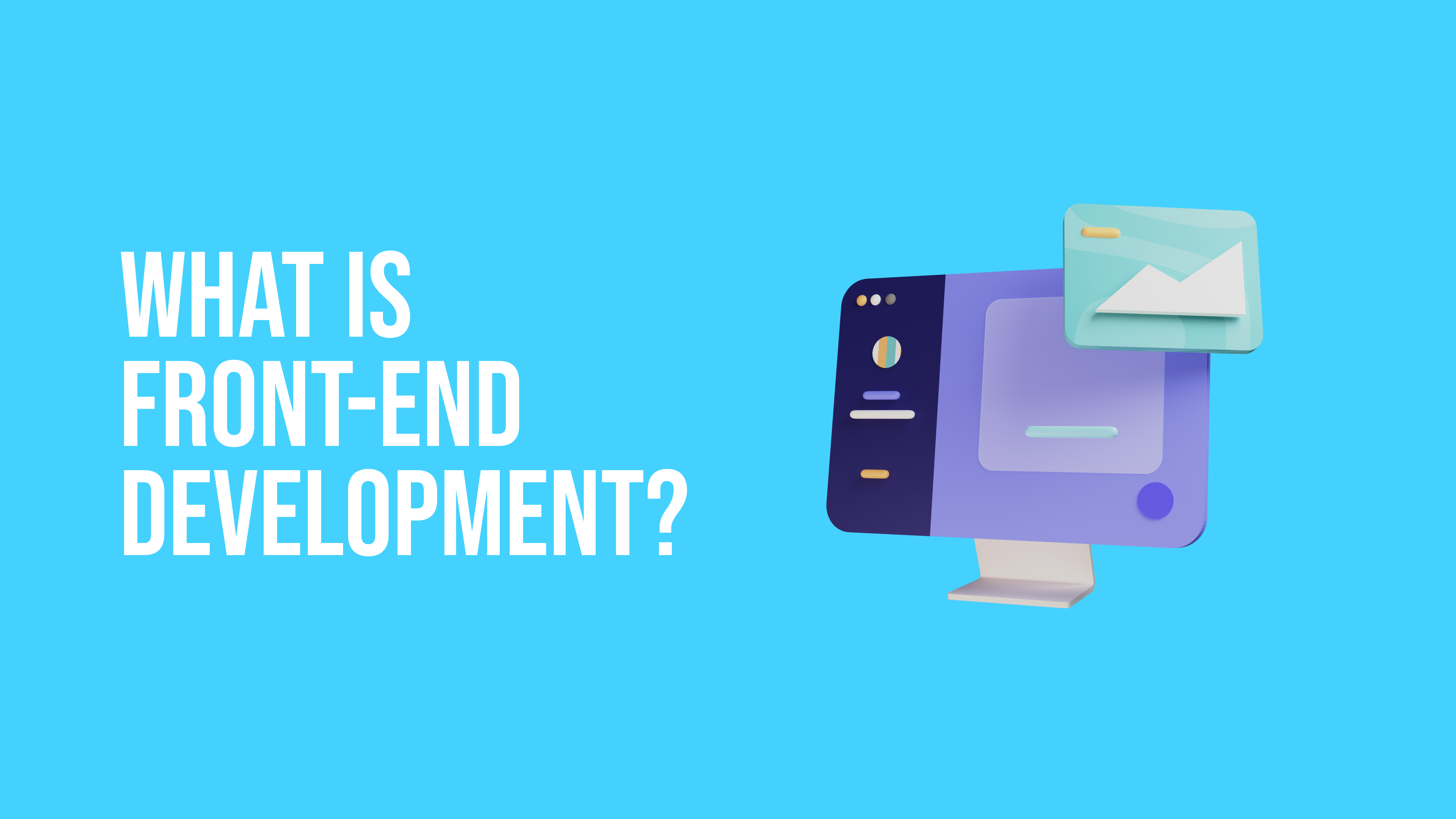When you open a browser tab, type in a URL, and press enter, a website will load. The site might contain text, images, buttons, a navigation menu, and many more elements. You interact with it for a specific purpose and get relevant information from it. The people that are responsible for creating such functional and interactive websites or web applications are called web developers. And web development can breaks down into three main concentrations; front end and back end. In this blog, we will tackle front-end development and the tools required for it.
What is front-end development?
Front-end development is the process of creating the part of a website or application that interacts directly with the user. The front-end of a website is also popularly called the ‘client side’. Everything that you see when you’re navigating around the internet, from fonts and colours to dropdown menus and sliders, is a combination of HTML, CSS, and JavaScript being controlled by your computer’s browser. Front-end ensures that a website or web application is functional (serves a purpose) and responsive (appears neatly irrespective of the size of the user’s screen).
So, in short, front-end development is the process of creating the structure, design, behaviour, and content of a website or application.

Front-end languages
Front-end developers are responsible for a website’s user-facing code and the architecture of its immersive user experience. For this front end developers must be familiar with the three main languages; HTML, CSS, and JavaScript.
HTML: HTML stands for Hypertext Markup Language. It is the most basic building block of a website. ‘Hypertext’ refers to the links that connect web pages with one another, either within a single website or between different websites. ‘Markup’ is used to define the text, images, and other content for display in a browser. HTML code provides the overall framework of what a website will look and contain.
CSS: CSS stands for Cascading Style Sheets. It is a language that adds style to the content of a webpage. It is responsible for the look, responsiveness, and to some extent the feel of the content. You can alter the font, colour, size, add spacing to your content, split it into sections, add animations and other simple decorative features to the HTML code.
JavaScript: JavaScript is a scripting language used on both the client-side and the server-side to make a website more interactive and dynamic. Where HTML and CSS give structure and style to a web page, JavaScript engages a user. You can display animations, play audio or video on a webpage, show or hide information with a click of a button, zoom in and out of an image, use a drop-down/hamburger menu, etc. with JS. You could say JavaScript adds behaviour to a webpage.
An easy way to go about these is: HTML is the data layer, CSS is the design layer, and JavaScript is the interactive layer.

Libraries and frameworks:
In addition to these languages, front-end devs need to be adept at frameworks like Bootstrap, Foundation, Backbone, AngularJS, ReactJS, EmberJS, and more to create great content.
What does a front-end developer do?
Front-end developers have one general responsibility; to ensure that website visitors can easily interact with the page. They combine design, technology, and programming to create a website’s appearance, as well as take care of debugging. Anything that you see on a website, the buttons that you click, is the work of a front-end developer.
Using all the tools above, they lay out the framework of the website. They also work closely with designers, UI and UX analysts to build wireframes and prototypes of the final application. It is also important to have effective communication with other teams across the business to understand the specific goals and needs.
Front-end developers usually study software engineering in school. But a degree is not necessary to get involved. Developers can come from any background but must be willing to put in the work and stay updated with the latest technology stacks and frameworks.
A web developer is an umbrella term that includes front-end and back-end developers. The job title in advertisements may not always contain the words ‘front-end developers’. Front-end development can more or less overlap with the following variations of a usability designer like User Interface (UI) designer, User Experience (UX) designer, Interaction Designer, and even Graphic Designer. No matter the company and variation in job title, you can generally expect a front-end developer to undertake the following responsibilities.
- Prototyping the final product
- Using HTML, CSS, and JavaScript to bring the design concepts to life
- Using CSS preprocessors to add functionality to CSS coding.
- Developing the user interface
- Following best SEO practices
- Testing the product for usability
- Fixing errors and bugs
- Creating a seamless user experience regardless of the browser (cross-browser)
- Creating a design functional across different operating systems (cross-platform)
- Creating a mobile-friendly and responsive design; appears clear and functional across devices of all sizes and resolutions
- Making the web application accessible to a wider audience
Tools used by a front-end developer:
The job of a front-end developer is a combination of design and web development. So, the tools they use span across these areas of focus.
Graphic Design Tools: Before the actual development process starts, developers use graphic design tools to create a prototype of their website. This lets them test and experiment with their user interface before starting to code. Depending upon the size of the team and the project scope this process might be as simple as using a pen and paper, or it might require graphics editing programs like Sketch or Photoshop, or advanced tools like Figma or Illustrator.

Learn why prototyping is necessary for design and development.
Code Editing Tools: A code editing tool is what a developer writes the code in. Some developers may prefer Notepad, while others opt for more advanced tools like Visual Studio or Eclipse. It is important to try out a few to find out which one works best for you.
Conclusion:
As of the time of writing, the internet contains more than 1.8 billion websites. The people responsible for designing, coding, testing, and maintaining all these websites are called web developers. Web development encompasses various aspects like front-end and back-end development, UI and UX design, graphic design, etc. Front-end developers build the client-side of a website or application. In fact, everything you see on this webpage right now is the work of a front-end developer.
Front-end development takes responsibility, creativity, and an impressive work ethic. It ensures job security too, since creating an interface that users can engage with, lies at the forefront of any business.

